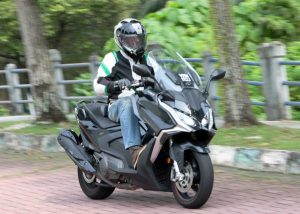Hydrogen buses to power Sarawak Metro’s KUTS project
By THE STAR | 08 July 2024
KUCHING: Sarawak Metro Sdn Bhd will buy 55 additional hydrogen buses for its ambitious Kuching Urban Transport System (KUTS) project.
These buses will serve as the feeder bus network as the “first and last mile connectivity” for commuters of the Autonomous Rapid Transit (ART), the backbone of KUTS which will also to be powered by hydrogen fuel cell.
Chief executive officer Mazli Mustaffa said the choice of hydrogen feeder buses is part of Sarawak Metro’s commitment to revolutionise Kuching’s public transport system with the hydrogen-powered buses.
He described the hydrogen buses’ 300km range and zero emissions as the ideal complement to the ART system. ART will run on virtual tracks within dedicated lanes and each ART vehicle can carry 250 passengers.
Sarawak Metro, a wholly-owned subsidiary of Sarawak Economic Development Corp, has been entrusted by the Sarawak state government as the implementer, maintainer and operator of KUTS.
“With almost five years of experience in operating South-East Asia’s first hydrogen bus passenger service since 2020, Sarawak Metro is well-equipped to handle the operation and maintenance of KUTS’ future fleet of green-hydrogen powered vehicles and feeder buses,” said Mazli in a presentation on KTUS project at the recent Asia Pacific Green Hydrogen 2024 conference.
Under the purview of the Sarawak Transport Ministry, the KUTS project is being developed in phases with Phase 1 consisting of three main lines - the Blue Line, Red Line and Green Line.
The 27.6km Blue Line is from Rembus in Kota Samarahan to Hikmah Exchange in Kuching city centre while the 12.3km Red Line is from Kuching Sentral to Pending.
The 30km Green Line runs from Pending to Damai in the Santubong tourism belt.
The Phase 1 project will have 31 stations and one interchange station. About 80% of the dedicated lanes for the ART would be at road level and 20% elevated.
Phase 1 of the KUTS project is scheduled to begin passenger service in stages, starting from the fourth quarter of next year and is expected to complete by end-2027.
According to Sarawak Transport Minister Datuk Seri Lee Kim Shin, KTUS Phase 1,which cover a total length of 69.9km, is estimated to cost about RM80mil per km and the project cost includes land acquisition, infrastructure works and depots, ART hydrogen vehicles and feeder buses.
Comparatively, he said the Kuala Lumpur LRT3 project, with a length of 37.6km, had a higher cost of about RM540mil per km.
To increase accessibility to KTUS, Sarawak Metro recently signed a memorandum of understanding (MoU) with IJM Land Bhd and Liang Court Wanisara (Sarawak) Sdn Bhd for the construction of a linkway to one of the ART stations along the Blue Line.
The ART station is strategically located near the Sarawak Heart Centre in Samarahan.
Mazli said the planned linkway will connect the ART station to a Transit Oriented Development to be built nearby, enhancing accessibility and convenience for the surrounding community.
The MoU outlines proposals for the construction of an overhead connector directly linking the station, along with the development of a “walking and cycling plan” and the implementation of smart mobility solutions, including an e-bicycle system.
In highlighting the importance of private sector’s partnership in advancing the KUTS project, Mazli said Sarawak Metro encourages more private entities to work together with the company on innovation solutions that can create a positive impact on the city’s future modern public transport system.
Tags
Autos News
Reviews

First drive with the 2025 Hyundai Tuscon and Santa Fe: Seoul...

5.8
Kymco AK550 Premium: Smart easy rider

BYD Seal 6 Premium: Sweet deal, generous kit, sensible prici...

8.7
Mazda CX-80 2.5G PHEV AWD High Plus: Upmarket upgrade

Proton X50 Flagship: Tuned for success

6.6
Triumph Trident 660: Beautifully balanced package

8.4
Mercedes-AMG GLA 35 4Matic: Never a dull moment

Lamborghini Urus SE: Ultimate control
Videos

Free & Easy Media Test: Latest Proton X50 Flagship to Kuanta...

Zeekr Space Sunway City Video

Honda Civic Type R Ultimate Edition: Last 40 Units for Europ...
